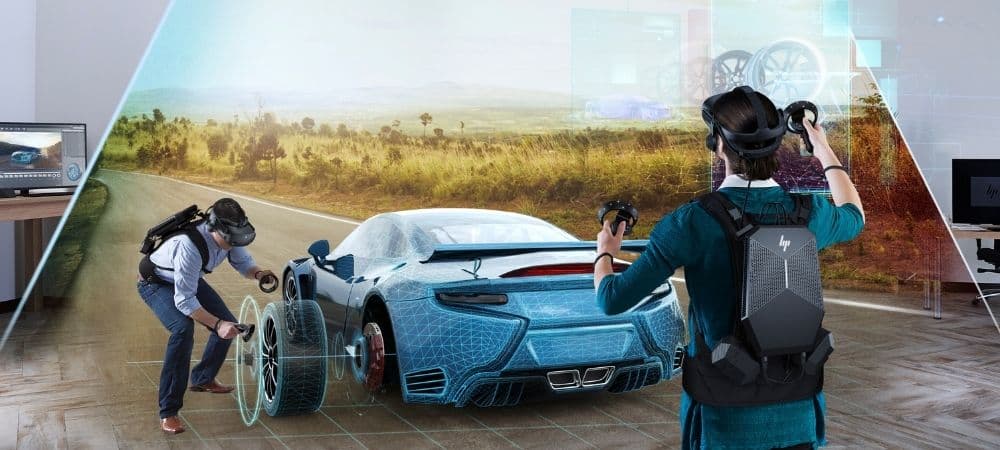Extended Reality (XR) : EXPLAINED!
I remember standing on the edge of a plank looking at the ground a dizzying number of stories below, with a voice telling me to jump and me being petrified in my place. The situation was not as sinister as it sounds, as I was also wearing virtual reality (VR) headgear and actually standing six centimeters above the ground. But there at that moment, my reality was not the oddly plain but perfectly padded, empty room, nor the fact that I was barely above the ground. I was fully convinced that jumping off the plank I was on would kill me.
It was during this experience that I truly realized the power of being immersed in an alternate reality, which actually overrides life. It also made me start thinking about other uses for this extremely interesting trip out of my everyday life.
I quickly learned that VR can also be called Extended Reality (XR), which is an umbrella term for Augmented and Mixed Reality (MR) as well. The basic difference between VR and Augmented Reality (AR) is that VR creates an alternate universe, and drowns out the real world by using headphones and gear, while augmented reality superimposes or relays images on to real-life using your phone or some sort of screen. (Think filters on various social media apps where a random animal appears in your room.) While MR goes one step further than AR and after reading the surroundings, places holographic objects that you can interact with within your reality. Remember all those cool hand-controlled holographic maps in movies? They are now a reality.
The uses of XR however go beyond scaring me senseless and swiping on holographic maps, with some saying that experiences like buying a house or even a doctor’s visit may change forever by 2030. We still may not be sure of what technological changes will be possible in the future (with products such as Microsoft’s Hololens giving us major goals) but what we do know for certain is that the future for XR looks golden. The XR market predicted to grow with an explosive compound annual growth rate (CAGR) of 48.3% between the years 2020 to 2030, according to Bloomberg.
So who will be using XR in the future? They say everyone, but here is a closer look at what all this technology is expected to change soon.
Training people for difficult tasks that may involve life and death situations can become so much more efficient, image training pilots for crash landings using VR stimulations or training doctors to treat a critical patient without actually having a patient using MR. Even astronauts will be trained in real-time space settings without actually leaving planet earth or bomb disposal squads could learn how to dismantle dangerous bombs without ever putting themselves in danger. The possibilities are endless.
Working from home is definitely another aspect that will change, with remote meetings literally being brought to life in empty boardrooms with everyone connected through XR.
If you are a shopaholic, you may be able to try everything on using either AR like Rolex already offers or go one step further like Ikea has and actually place furniture in your room before you buy it using just your smartphone.
In the same vein, buying real estate even from a few states over would be a breeze. Need to shift cities but barely have time to move, no problem. With XR you may be able to tour the prospective space you need to buy or rent without ever leaving your current abode.
Entertainment is another industry where XR will totally revolutionize the scene. Imagine meeting your favorite celebrities in the comfort of your living room, or better imagine being totally immersed in a movie experience where you also live the life the protagonist is going through.
As with all things amazing, there are definitely certain challenges that need to be overcome before XR is adopted into the mainstream. XR is also a very intrusive technology that will collect copious amounts of personal data, about what you do, where you do it and even the emotions you feel, so naturally, data protection is one of the foremost challenges.
Then of course there is the high cost of the technology, which definitely needs to come down. Otherwise, a large chunk of the companies will not be able to invest in technology. Then there is the issue of the gear, which has to not only be intelligent but user friendly as well as comfortable. Then there is the issue of how real it would look when virtual objects are placed into the real world, especially with changes in light.
Despite these challenges, we have seen XR being used in the world like never before and as said before things are only predicted to get better for XR technologies, so you never know, before long we may just be living in a simulation with the option to come back to life, if we fancy but for now it is a distant dream.
– Nida Khan

Comments are closed